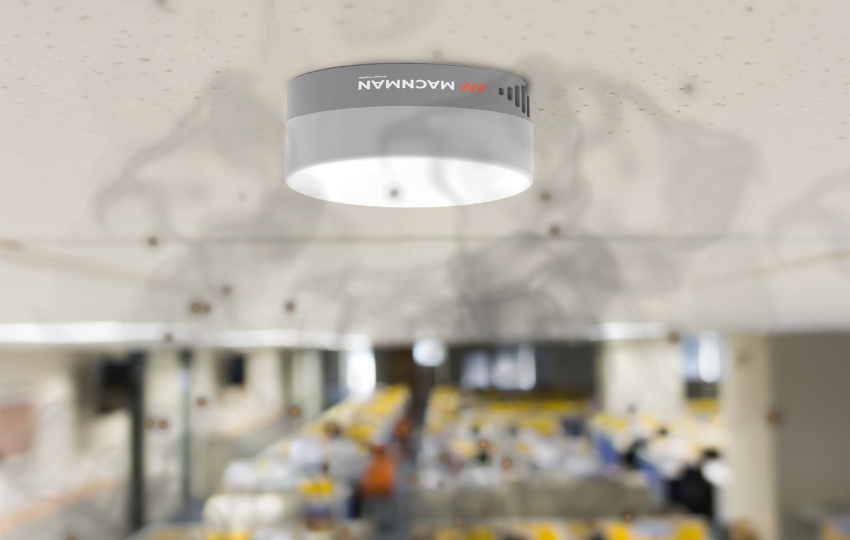
Fire is a devastating disaster that can lead to the loss of lives, property, and businesses. Therefore, it's important to have a fire fighting control system in place to detect and suppress fires as soon as possible. Rather than being DIY projects, fire protection systems are life-saving infrastructure. As a result of the shortage of skilled inspectors, less than 50 percent of fire protection systems across India are being inspected as they should.
Therefore, a more efficient process would deploy smart devices that allow these inspectors to monitor remotely, rather than sending inspectors to the field, where they can only get to a few job sites a day. In recent times, IoT (Internet of Things) and LoRaWAN (Long Range Wide Area Network) technology have been used to develop firefighting control systems that are more efficient and effective. This case study will explore the implementation of lora based fire monitoring systems, the challenges faced, and the solutions adopted.
Challenges for Fire Fighting Control System
One of the challenges encountered during the implementation of the fire fighting control system was interference from other wireless devices. The system was not functioning properly because of interference from Wi-Fi routers and other IoT devices. This made it difficult for the sensors to transmit data to the gateway device, resulting in inaccurate readings.
Another challenge was the limited range of the LoRaWAN technology. The gateway device had to be installed on the roof of the building to ensure it could receive data from all the sensors. This was not ideal as it made it difficult to monitor the system on a day-to-day basis, and maintenance of the device was also challenging. Hence Client needed a Lora based fire monitoring system.
Solutions & Deployment of Firefighting Control System
To address the issue of interference, the MACNMAN Fire Fighting control system was configured to operate on a different frequency band, which reduced the likelihood of interference. Additionally, the Lora based fire monitoring system was designed to use a mesh network, which allowed the sensors to relay data to other sensors until it reached the gateway device. This ensured that even if one sensor failed, data could still be transmitted to the cloud-based platform.
To address the limited range of the LoRaWAN technology, a repeater device was installed on each floor of the building. The repeater device received data from the sensors and transmitted it to the gateway device on the roof. This ensured that data could be transmitted from all the sensors in the building, and the system could be monitored more efficiently.
A firefighting control system was developed using LoRaWAN technology, which allows for long-range communication between the devices in the system & real-time monitoring. The system included Carbon Dioxide sensors that detect smoke, temperature, and humidity levels. The data from these sensors was transmitted wirelessly to a gateway device, which then forwarded the data to a cloud-based platform for analysis.
The system was deployed in a multi-story building with several tenants. The wireless smoke and co2 detectors & sensors were strategically placed in every room and corridor, and the gateway device was installed on the roof of the building for better connectivity. The cloud-based platform was accessible to the building management and the fire department.
Fire detection system using lora technology has equipment such as pumps, suppression systems, sprinklers, smoke detectors and other accessories which all work together to prevent fires, is essential. Water pressure is an essential factor in fire-fighting systems and should be high enough to meet the needs of buildings or warehouses with a private water tank or drawing on public water supplies. Problems can arise if the water pressure drops due to leaks or cracks, making it difficult to detect via gauges. To combat this issue, pipes are provided with pressure sensors and submersible water level sensors which transmit data wirelessly via lora based fire monitoring system so that it does not need to be checked manually by qualified personnel. In addition, LoRaWAN® controllers are used to retrofit existing power meters using the RS485 interface and Modbus protocol. When LoRaWAN gateway receives the data from the sensors, it processes directly and then forwards it via MQTT to the cloud where either MACNMAN or customer’s monitoring center (as preferred) is hosted. In essence, connected devices are enabled with a ‘communication system’ that share data between each other over LoRaWAN® fire protection systems networks whilst having their own operating system allowing users to access other information services.

Benefits of Fire Fighting Control System
- High Operational Efficiency : The lora based fire monitoring system can obtain & collect more data and use from these devices, hence it creates high operational efficiency
- Scientific Operation: Eliminate the outdated, ineffective practices for the inspection, testing, and maintenance of fire protection equipment.
Not only does the smart lora based fire monitoring system promise more accurate, more efficient inspection, testing, and maintenance of systems, but it could save lives, too with Wireless Fire Alarm System
Conclusion
The deployment of a fire fighting control system using IoT and LoRaWAN technology has significantly improved the ability to detect and suppress fires in the building. The challenges faced during the implementation of the system were overcome through a combination of frequency band adjustments, mesh networking, and the use of repeater devices of advanced LoRa technology. These solutions ensured that data was transmitted accurately, and the system could be monitored effectively. Overall, the fire protection systems by MACNMAN has proven to be a vital investment in ensuring the safety and security of the building and its tenants.